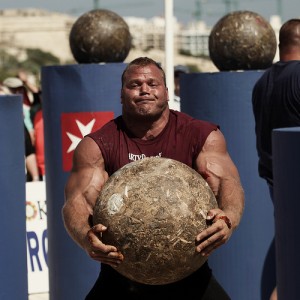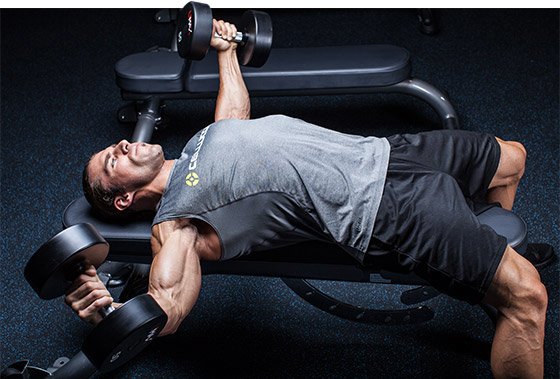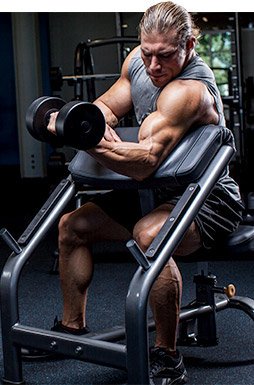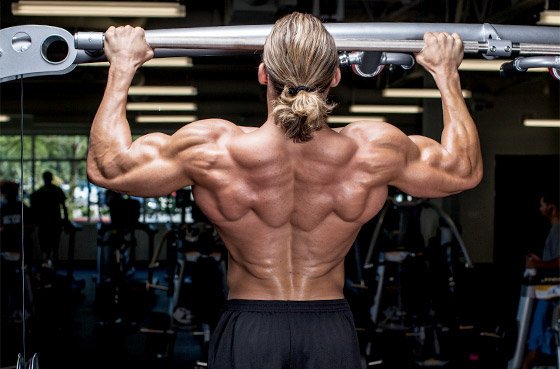 |
| Photo: Pond5 |
The Science of Strength
Thankfully we don’t need a periodic table or fancy equations to figure out how to get fit. However, it is helpful to know what makes muscles grow. It might seem counterintuitive, but in order to grow, a muscle must first be broken down. And that’s what happens when we lift weights. We’re applying stress to our muscle fibers to create the best possible kind of injury, triggering satellite cells to rush to the scene of the “trauma” in order to repair our muscles. These cells fuse muscle fibers together and create new muscle protein, known as myofibrils.The result: bigger, stronger muscles.
When it comes to strength training, we can use this process in our favor. Because the body adapts quickly to challenging tasks, if it can’t do something, it will try and change to make it easier the next time. According to Nick Tumminello, the owner of Performance University, the key is creating a training plan that provides stimulus to the muscles and elicits growth. Tumminello says that if we want our muscles to grow, we must subject them to “metabolic stress, muscle damage and tension.” It’s also important to increase and vary the amount and types of stimulus over time. This concept is known as progressive overload. Putting the method into practice could be as simple as upping the weight on the bar, mixing in new exercises, or focusing on eccentric lowering of the weight.
Maximum Muscle
So what are the best methods for building muscle from diet to training techniques? We called in elite powerlifter Casey Williams, World Record holder for the squat (700 pounds) and the combined total of bench, squat and deadlift (1,770 pounds) in the 220-pound weight class. Williams also coaches other athletes looking to get bigger and stronger. Here is his advice for anyone looking to build muscle safely and effectively.
1. Get moving.
For gaining size and lean muscle, Williams recommends focusing on four main exercises — squat, bench press, deadlift and overhead press — which aren’t just for powerlifters, he says. “Big moves are an invaluable way to increase strength and lean muscle.” And there’s science to back that up. Research shows that compound moves, such as the squat, recruit multiple muscle groups and elicit a larger hormonal response, making them more effective for building strength and muscle than isolated movements, like the leg extension. As for rep range, Williams recommends five or fewer repetitions for strength and six to 12 repetitions for gaining size.
2. Be free.
It’s not just the moves that matter most; equipment also plays a role. Williams advocates free weights over machines, and suggests getting your hands on a barbell, flat bench, power rack and plenty of weights. When it comes to exercise machines, his best advice is to avoid them all. In one study, which compared the performance of free weight users with the progress of another group using exercise machines, those using free weights outperformed the machine users, showing marked improvement in strength and balance.
3. Carry on.
If size is the goal, it’s best to prioritize muscle over miles. That doesn’t mean zero cardio, just a different kind. Think about it: A pro football player doesn’t train the same way as a world-class endurance athlete does. Focus on preserving muscles and burning fat. To accomplish those goals Williams recommends using hills sprints and farmer’s walk as part of a cardio routine. He also suggests sled pushes and pulls, which combine strength training with cardiovascular conditioning.
4. Eat up.
Packing on muscle usually calls for the consumption of additional calories, but it’s important to focus on quality over quantity. According to the Department of Medicine at University of Washington School of Medicine, the diet for an athlete or exerciser shouldn’t deviate from that of a healthy individual except in the overall amount of food. By avoiding processed foods, refined sugars and alcohol, and opting for lean protein, complex carbohydrates and healthy fats, lifters can adequately fuel their body to make gains in the gym.
5. Shut down.
Finding the exercise sweet spot can be a challenge. Too much exercise will result in overtraining, increased risk of injury and halted progress. On the other hand, too little exercise can make building muscle an uphill battle. It’s the combination of work and rest that will lead to results. Creating a training plan that allows for a day off between workouts is one method Williams recommends for beginners. More experienced lifters may be able to sustain a training plan that includes more workouts each week. But even then, Williams suggests a deloading phase every four to six weeks. This phase includes a reduction in the amount of weight during training sessions. Williams also points out that insufficient sleep can drastically affect performance in the gym and cause a strength training plateau.
Stronger Every Day
There’s no secret to making muscles grow. Although the process isn’t complicated, it does require commitment and consistency. But by challenging your body on a regular basis and fueling with proper nutrition, results are sure to follow.
Source: http://dailyburn.com/life/fitness/build-muscle-strength-training-tips/






















